
Explore Northern Canada
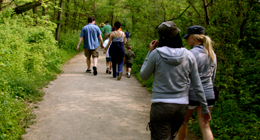
While natural hazards are present while hiking in Point Pelee National Park, the risk of injury can be minimized by taking reasonable precautions. Please visit Adventure Smart for details on trip planning and hiking safety.
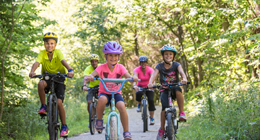
Bicycles are restricted to the Centennial Bike and Hike Trail and the park road/parking lots. For your safety, stay on trails to help avoid ticks and poison ivy. Please visit Adventure Smart for details on trip planning and biking safety.
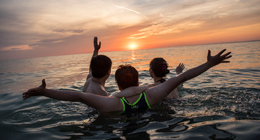
There are no lifeguards on duty at any of the Park's beaches. Never swim alone and always treat Lake Erie with caution. The lake can become rough very rapidly. The Tip area located at the extreme south end of the Park is a popular destination for visitors. There is NO swimming or wading in this area. Please obey the signs posted. Currents exist in this area that pose a hazard and are extremely dangerous. Please visit Adventure Smart for additional details on trip planning and water safety.
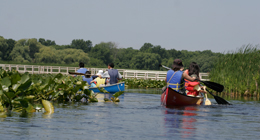
Wear your lifejacket at all times: Boats are required to have one lifejacket per person, 15m ((40 ft) of buoyant heaving line, spare paddles or oars, an anchor on 15m (40 ft) of line, a bailer and a whistle. If you capsize: Remain with your overturned boat and move shoreward. Sound three long blasts to attract attention if you need assistance. Please visit Adventure Smart for additional details on trip planning and water safety.
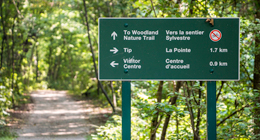
Stay on trails to avoid contact with ticks. The black-legged tick has become firmly established at Point Pelee. This creature, which has spread to areas throughout North America, can carry a bacterium, which causes the Lyme disease. Lyme disease is a serious illness; however, it's easy to prevent and treat when caught early.
For more information on Lyme disease, blacklegged ticks, and how to protect yourself from tick bites while enjoying the outdoors, please visit the following websites:
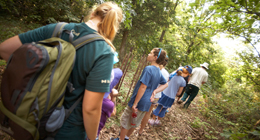
The feeding of any animal (e.g. deer, raccoons, birds, squirrels and fish) is strictly prohibited. Avoid the danger of being bitten and minimize your affect on the park's ecological balance.
Things to do in the Yukon, Northwest Territories, Nunavut or northern Manitoba and Newfoundland and Labrador. Plan ahead, make sure your reservations are in place, and verify what services might be available before you go.
Start living your story today
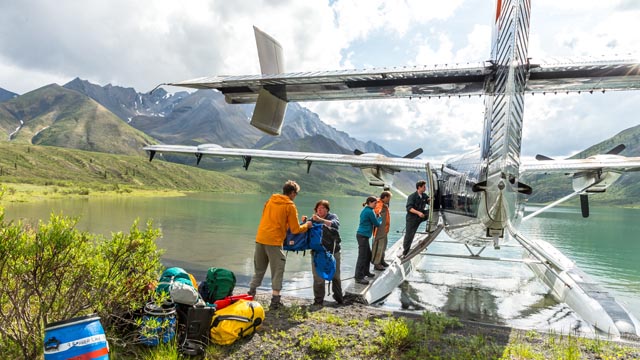
Make it happen!
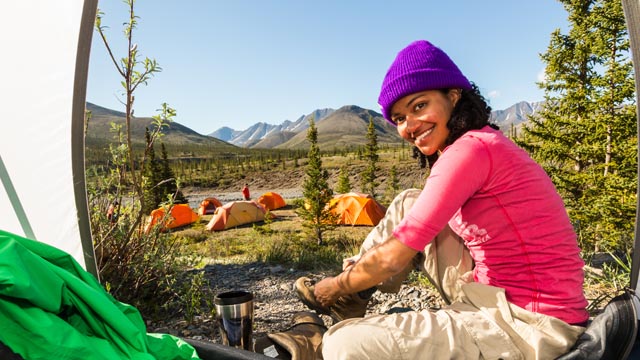
Discover all the options.
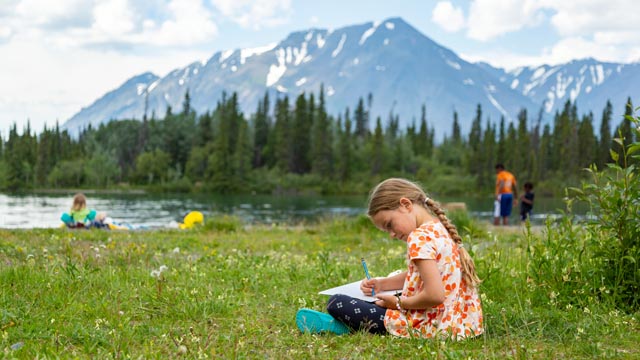
8-day Yukon itinerary from Whitehorse.
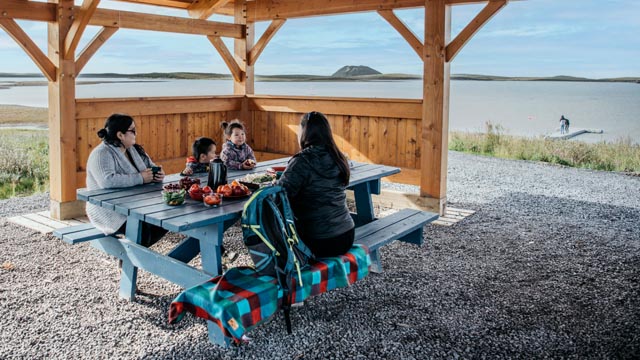
Discover hidden gems, must-sees and magical moments from the experts themselves.
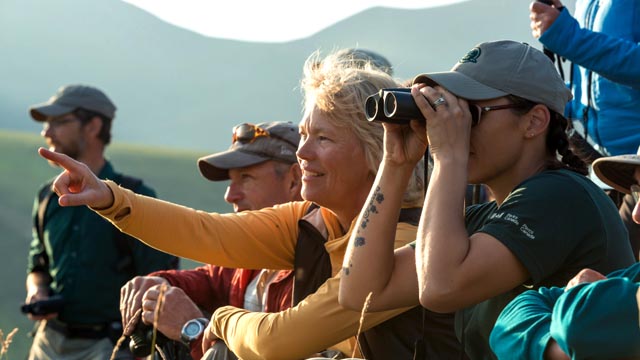
Learn how you can get involved in Parks Canada's efforts.
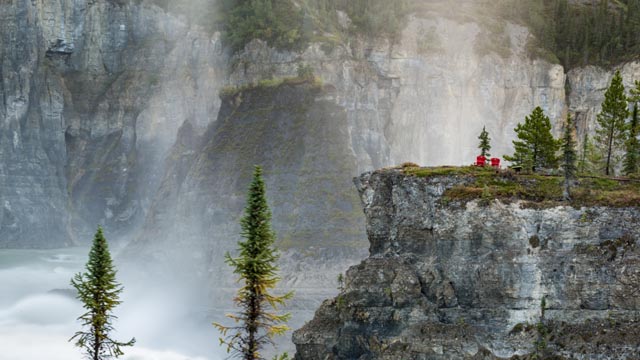
Have a seat in the most breathtaking locations across Northern Canada.
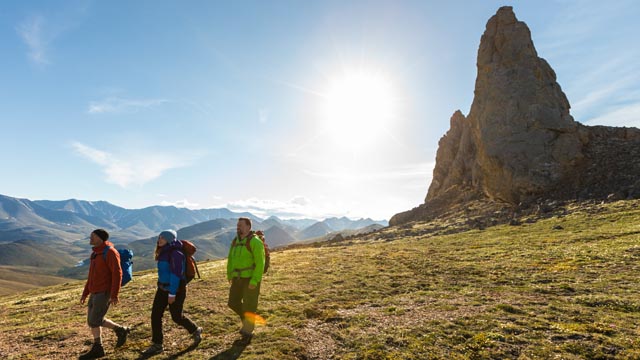
There is bound to be a hiking trail you like!
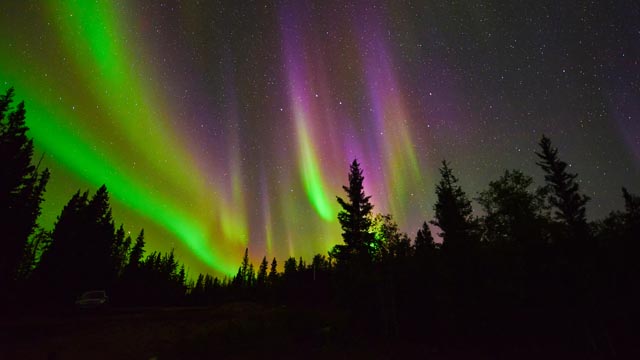
Be inspired by our adventure ideas!
Map of sites
| Type | Location text | Location name | Info |
|---|---|---|---|
| 1 | Akami-Uapishkᵁ-KakKasuak-Mealy Mountains National Park Reserve | Akami-Uapishkᵁ-KakKasuak-Mealy Mountains National Park Reserve | -58.348138 53.572076 |
| 1 | Aulavik National Park | Aulavik National Park | -119.5956 73.727 |
| 1 | Auyuittuq National Park | Auyuittuq National Park | -66.0107 67.3683 |
| 1 | Banff National Park | Banff National Park | -115.570421 51.178002 |
| 1 | Bruce Peninsula National Park | Bruce Peninsula National Park | -81.5248 45.2294 |
| 1 | Cape Breton Highlands National Park | Cape Breton Highlands National Park | -60.64 46.73 |
| 1 | Elk Island National Park | Elk Island National Park | -112.8616 53.6078 |
| 1 | Forillon National Park | Forillon National Park | -64.35 48.89 |
| 1 | Fundy National Park | Fundy National Park | -65.0353 45.6191 |
| 1 | Georgian Bay Islands National Park | Georgian Bay Islands National Park | -79.8636 44.8515 |
| 1 | Glacier National Park | Glacier National Park | -117.5235 51.2679 |
| 1 | Grasslands National Park | Grasslands National Park | -107.50903 49.15088 |
| 1 | Gros Morne National Park | Gros Morne National Park | -57.7380556 49.6894444 |
| 1 | Gulf Islands National Park Reserve | Gulf Islands National Park Reserve | -123.4 48.66 |
| 1 | Gwaii Haanas National Park Reserve, National Marine Conservation Area Reserve, and Haida Heritage Site | Gwaii Haanas National Park Reserve, National Marine Conservation Area Reserve, and Haida Heritage Site | -131.41 52.39 |
| 1 | Ivvavik National Park | Ivvavik National Park | -139.72997 69.026095 |
| 1 | Jasper National Park | Jasper National Park | -118.081022144988 52.8737348967012 |
| 1 | Kejimkujik National Park and National Historic Site | Kejimkujik National Park and National Historic Site | -65.2086 44.43829 |
| 1 | Kluane National Park and Reserve | Kluane National Park and Reserve | -137.51 60.76 |
| 1 | Kootenay National Park | Kootenay National Park | -115.983967 50.944013 |
| 1 | Kouchibouguac National Park | Kouchibouguac National Park | -65.005412 46.773001 |
| 1 | La Mauricie National Park | La Mauricie National Park | -72.7707992 46.7332525 |
| 1 | Mingan Archipelago National Park Reserve | Mingan Archipelago National Park Reserve | -63.5523 50.2246 |
| 1 | Mount Revelstoke National Park | Mount Revelstoke National Park | -118.0451 51.0938 |
| 1 | Nahanni National Park Reserve | Nahanni National Park Reserve | -125.9035 61.6101 |
| 1 | Nááts'ihch'oh National Park Reserve | Nááts'ihch'oh National Park Reserve | -128.20169 62.74438 |
| 1 | Pacific Rim National Park Reserve | Pacific Rim National Park Reserve | -125.722798612523 49.0604056454727 |
| 1 | Point Pelee National Park | Point Pelee National Park | -82.51847 41.96284 |
| 1 | Prince Albert National Park | Prince Albert National Park | -106.08319 53.92296 |
| 1 | Prince Edward Island National Park | Prince Edward Island National Park | -63.0742 46.4156 |
| 1 | Pukaskwa National Park | Pukaskwa National Park | -86.2899446 48.6033435 |
| 1 | Qausuittuq National Park | Qausuittuq National Park | -100 76 |
| 1 | Quttinirpaaq National Park | Quttinirpaaq National Park | -71.6481 82.1323 |
| 1 | Riding Mountain National Park | Riding Mountain National Park | -99.97219 50.65768 |
| 1 | Rouge National Urban Park | Rouge National Urban Park | -79.185442 43.834241 |
| 1 | Sable Island National Park Reserve | Sable Island National Park Reserve | -59.91591 43.92788 |
| 1 | Sirmilik National Park | Sirmilik National Park | -79.83 73.08 |
| 1 | Terra Nova National Park | Terra Nova National Park | -53.9638 48.5256 |
| 1 | Thaidene Nene National Park Reserve | Thaidene Nene National Park Reserve | -110.694782 62.40354 |
| 1 | Thousand Islands National Park | Thousand Islands National Park | -75.860812 44.452961 |
| 1 | Torngat Mountains National Park | Torngat Mountains National Park | -63.6964 59.4358 |
| 1 | Tuktut Nogait National Park | Tuktut Nogait National Park | -121.8127 68.75 |
| 1 | Ukkusiksalik National Park | Ukkusiksalik National Park | -89.76 65.85 |
| 1 | Vuntut National Park | Vuntut National Park | -139.86 68.39 |
| 1 | Wapusk National Park | Wapusk National Park | -93.23 57.8 |
| 1 | Waterton Lakes National Park | Waterton Lakes National Park | -113.93 49.08 |
| 1 | Wood Buffalo National Park | Wood Buffalo National Park | -113.2581 59.36 |
| 1 | Yoho National Park | Yoho National Park | -116.491798 51.398117 |
| Type | Location text | Location name | Info |
|---|---|---|---|
| 2 | Alexander Graham Bell National Historic Site | Alexander Graham Bell National Historic Site | -60.74645 46.10343 |
| 2 | Ardgowan National Historic Site | Ardgowan National Historic Site | -63.126329 46.251826 |
| 2 | Athabasca Pass National Historic Site | Athabasca Pass National Historic Site | -118.185948 52.380719 |
| 2 | Banff Park Museum National Historic Site | Banff Park Museum National Historic Site | -115.571671 51.173769 |
| 2 | Bar U Ranch National Historic Site | Bar U Ranch National Historic Site | -114.245099 50.422812 |
| 2 | Batoche National Historic Site | Batoche National Historic Site | -106.111193 52.753665 |
| 2 | Battle Hill National Historic Site | Battle Hill National Historic Site | -81.70565 42.694133 |
| 2 | Battle of Cook's Mills National Historic Site | Battle of Cook's Mills National Historic Site | -79.1749 42.997917 |
| 2 | Battle of Restigouche National Historic Site | Battle of Restigouche National Historic Site | -66.735395 48.013427 |
| 2 | Battle of Tourond's Coulee / Fish Creek National Historic Site | Battle of Tourond's Coulee / Fish Creek National Historic Site | -106.152659 52.53901 |
| 2 | Battle of the Châteauguay National Historic Site | Battle of the Châteauguay National Historic Site | -73.928586 45.158851 |
| 2 | Battle of the Windmill National Historic Site | Battle of the Windmill National Historic Site | -75.487364 44.721236 |
| 2 | Beaubassin and Fort Lawrence National Historic Sites | Beaubassin and Fort Lawrence National Historic Sites | -64.261052 45.847286 |
| 2 | Beausoleil Island National Historic Site | Beausoleil Island National Historic Site | -79.8636 44.8515 |
| 2 | Bellevue House National Historic Site | Bellevue House National Historic Site | -76.504333 44.22285 |
| 2 | Bethune Memorial House National Historic Site | Bethune Memorial House National Historic Site | -79.37615 44.920933 |
| 2 | Bloody Creek National Historic Site | Bloody Creek National Historic Site | -65.30972 44.82222 |
| 2 | Boishébert and Beaubears Island Shipbuilding National Historic Sites | Boishébert and Beaubears Island Shipbuilding National Historic Sites | -65.562429 46.977393 |
| 2 | Canso Islands National Historic Site | Canso Islands National Historic Site | -60.970702 45.346563 |
| 2 | Cape Spear Lighthouse National Historic Site | Cape Spear Lighthouse National Historic Site | -52.62332 47.519922 |
| 2 | Carillon Barracks National Historic Site | Carillon Barracks National Historic Site | -74.371897 45.564978 |
| 2 | Carillon Canal National Historic Site | Carillon Canal National Historic Site | -74.375634 45.567508 |
| 2 | Carleton Martello Tower National Historic Site | Carleton Martello Tower National Historic Site | -66.076583 45.252063 |
| 2 | Carrying Place of the Bay of Quinte National Historic Site | Carrying Place of the Bay of Quinte National Historic Site | -77.581817 44.048686 |
| 2 | Cartier-Brébeuf National Historic Site | Cartier-Brébeuf National Historic Site | -71.239584 46.825454 |
| 2 | Castle Hill National Historic Site | Castle Hill National Historic Site | -53.97154 47.25098 |
| 2 | Cave and Basin National Historic Site | Cave and Basin National Historic Site | -115.590794 51.169388 |
| 2 | Chambly Canal National Historic Site | Chambly Canal National Historic Site | -73.283258 45.446911 |
| 2 | Charles Fort National Historic Site | Charles Fort National Historic Site | -65.520246 44.740812 |
| 2 | Chilkoot Trail National Historic Site | Chilkoot Trail National Historic Site | -135.110395 59.767291 |
| 2 | Coteau-du-Lac National Historic Site | Coteau-du-Lac National Historic Site | -74.177615 45.287624 |
| 2 | Dalvay-by-the-Sea National Historic Site | Dalvay-by-the-Sea National Historic Site | -63.377296 46.414762 |
| 2 | D’Anville’s Encampment National Historic Site | D’Anville’s Encampment National Historic Site | -63.646611 44.674692 |
| 2 | First Oil Well in Western Canada National Historic Site | First Oil Well in Western Canada National Historic Site | -113.986759 49.070984 |
| 2 | Fisgard Lighthouse National Historic Site | Fisgard Lighthouse National Historic Site | -123.447934 48.430429 |
| 2 | Forges du Saint-Maurice National Historic Site | Forges du Saint-Maurice National Historic Site | -72.657947 46.398493 |
| 2 | Fort Anne National Historic Site | Fort Anne National Historic Site | -65.518724 44.741533 |
| 2 | Fort Battleford National Historic Site | Fort Battleford National Historic Site | -108.29514 52.72671 |
| 2 | Fort Beauséjour – Fort Cumberland National Historic Site | Fort Beauséjour – Fort Cumberland National Historic Site | -64.292126 45.863618 |
| 2 | Fort Chambly National Historic Site | Fort Chambly National Historic Site | -73.276879 45.449445 |
| 2 | Fort Edward National Historic Site | Fort Edward National Historic Site | -64.134978 44.996456 |
| 2 | Fort Espérance National Historic Site | Fort Espérance National Historic Site | -101.577484 50.492263 |
| 2 | Fort Gaspareaux National Historic Site | Fort Gaspareaux National Historic Site | -64.070743 46.043211 |
| 2 | Fort George National Historic Site | Fort George National Historic Site | -79.063117 43.251933 |
| 2 | Fort Langley National Historic Site | Fort Langley National Historic Site | -122.573067 49.168833 |
| 2 | Fort Lennox National Historic Site | Fort Lennox National Historic Site | -73.267721 45.120657 |
| 2 | Fort Livingstone National Historic Site | Fort Livingstone National Historic Site | -101.95749 51.90371 |
| 2 | Fort Malden National Historic Site | Fort Malden National Historic Site | -83.112417 42.1079 |
| 2 | Fort McNab National Historic Site | Fort McNab National Historic Site | -63.51533 44.60008 |
| 2 | Fort Pelly National Historic Site | Fort Pelly National Historic Site | -101.99885 51.77659 |
| 2 | Fort Rodd Hill National Historic Site | Fort Rodd Hill National Historic Site | -123.447934 48.430429 |
| 2 | Fort Sainte Marie de Grace National Historic Site | Fort Sainte Marie de Grace National Historic Site | -64.351658 44.288195 |
| 2 | Fort St. James National Historic Site | Fort St. James National Historic Site | -124.255602355581 54.4395351465807 |
| 2 | Fort St. Joseph National Historic Site | Fort St. Joseph National Historic Site | -83.9475307 46.0648557 |
| 2 | Fort Walsh National Historic Site | Fort Walsh National Historic Site | -109.881435 49.572802 |
| 2 | Fort Wellington National Historic Site | Fort Wellington National Historic Site | -75.508607 44.713266 |
| 2 | Fortifications of Québec National Historic Site | Fortifications of Québec National Historic Site | -71.213471 46.813603 |
| 2 | Fortress of Louisbourg National Historic Site | Fortress of Louisbourg National Historic Site | -59.986811 45.892841 |
| 2 | Frenchman Butte National Historic Site | Frenchman Butte National Historic Site | -109.57372 53.62775 |
| 2 | Frog Lake National Historic Site | Frog Lake National Historic Site | -110.358618 53.831229 |
| 2 | Georges Island National Historic Site | Georges Island National Historic Site | -63.559302 44.641314 |
| 2 | Gitwangak Battle Hill National Historic Site | Gitwangak Battle Hill National Historic Site | -128.015056 55.120389 |
| 2 | Grand-Pré National Historic Site | Grand-Pré National Historic Site | -64.311792 45.108775 |
| 2 | Green Gables Heritage Place | Green Gables Heritage Place | -63.377296 46.489296 |
| 2 | Grosse Île and the Irish Memorial National Historic Site | Grosse Île and the Irish Memorial National Historic Site | -70.672328 47.020616 |
| 2 | Gulf of Georgia Cannery National Historic Site | Gulf of Georgia Cannery National Historic Site | -123.18655 49.124967 |
| 2 | HMCS Haida National Historic Site | HMCS Haida National Historic Site | -79.85535 43.275298 |
| 2 | Halifax Citadel National Historic Site | Halifax Citadel National Historic Site | -63.580392 44.647308 |
| 2 | Hawthorne Cottage National Historic Site | Hawthorne Cottage National Historic Site | -53.209958 47.535158 |
| 2 | Hopedale Mission National Historic Site | Hopedale Mission National Historic Site | -60.2191337 55.461482 |
| 2 | Inverarden House National Historic Site | Inverarden House National Historic Site | -74.671016 45.031266 |
| 2 | Jasper House National Historic Site | Jasper House National Historic Site | -117.977012 53.145883 |
| 2 | Jasper Park Information Centre National Historic Site | Jasper Park Information Centre National Historic Site | -118.080772 52.877293 |
| 2 | Kicking Horse Pass National Historic Site | Kicking Horse Pass National Historic Site | -116.387388 51.435795 |
| 2 | Kingston Fortifications National Historic Site | Kingston Fortifications National Historic Site | -76.459676 44.230971 |
| 2 | Klondike National Historic Sites | Klondike National Historic Sites | -139.4305671 64.0627397 |
| 2 | Kootenae House National Historic Site | Kootenae House National Historic Site | -116.045623 50.526654 |
| 2 | L'Anse aux Meadows National Historic Site | L'Anse aux Meadows National Historic Site | -55.5330555 51.5952777 |
| 2 | Lachine Canal National Historic Site | Lachine Canal National Historic Site | -73.55179 45.499022 |
| 2 | Laurier House National Historic Site | Laurier House National Historic Site | -75.677976 45.427759 |
| 2 | Louis S. St-Laurent National Historic Site | Louis S. St-Laurent National Historic Site | -71.826126 45.242191 |
| 2 | Louis-Joseph Papineau National Historic Site | Louis-Joseph Papineau National Historic Site | -73.551725 45.509875 |
| 2 | Lower Fort Garry National Historic Site | Lower Fort Garry National Historic Site | -96.935293 50.109699 |
| 2 | Lévis Forts National Historic Site | Lévis Forts National Historic Site | -71.1586778 46.8153123 |
| 2 | Maligne Lake Chalet and Guest House National Historic Site | Maligne Lake Chalet and Guest House National Historic Site | -117.6426 52.72898 |
| 2 | Manoir Papineau National Historic Site | Manoir Papineau National Historic Site | -74.943472 45.649864 |
| 2 | Marconi National Historic Site | Marconi National Historic Site | -59.952577 46.21105 |
| 2 | Melanson Settlement National Historic Site | Melanson Settlement National Historic Site | -65.596098 44.719092 |
| 2 | Merrickville Blockhouse National Historic Site | Merrickville Blockhouse National Historic Site | -75.837325 44.916524 |
| 2 | Mnjikaning Fish Weirs National Historic Site | Mnjikaning Fish Weirs National Historic Site | -79.369236 44.603862 |
| 2 | Monument Lefebvre National Historic Site | Monument Lefebvre National Historic Site | -64.567103 45.97925 |
| 2 | Motherwell Homestead National Historic Site | Motherwell Homestead National Historic Site | -103.4244 50.71892 |
| 2 | Obadjiwan–Fort Témiscamingue National Historic Site | Obadjiwan–Fort Témiscamingue National Historic Site | -79.455448 47.290331 |
| 2 | Pingo Canadian Landmark | Pingo Canadian Landmark | -133.1184 69.4002 |
| 2 | Point Clark Lighthouse National Historic Site | Point Clark Lighthouse National Historic Site | -81.75729 44.07281 |
| 2 | Pointe-au-Père Lighthouse National Historic Site | Pointe-au-Père Lighthouse National Historic Site | -68.468834 48.517426 |
| 2 | Port au Choix National Historic Site | Port au Choix National Historic Site | -57.3755555 50.7124999 |
| 2 | Port-Royal National Historic Site | Port-Royal National Historic Site | -65.609643 44.711673 |
| 2 | Prince of Wales Fort National Historic Site | Prince of Wales Fort National Historic Site | -94.213579 58.796973 |
| 2 | Prince of Wales Tower National Historic Site | Prince of Wales Tower National Historic Site | -63.569698 44.621483 |
| 2 | Province House National Historic Site | Province House National Historic Site | -63.126083 46.234859 |
| 2 | Queenston Heights National Historic Site | Queenston Heights National Historic Site | -79.052923 43.160074 |
| 2 | Red Bay National Historic Site | Red Bay National Historic Site | -56.4156 51.7333 |
| 2 | Rideau Canal National Historic Site | Rideau Canal National Historic Site | -76.020767 44.897311 |
| 2 | Ridgeway Battlefield National Historic Site | Ridgeway Battlefield National Historic Site | -79.041617 42.904083 |
| 2 | Riding Mountain Park East Gate Registration Complex National Historic Site | Riding Mountain Park East Gate Registration Complex National Historic Site | -99.555423 50.683271 |
| 2 | Riel House National Historic Site | Riel House National Historic Site | -97.136242 49.819232 |
| 2 | Rocky Mountain House National Historic Site | Rocky Mountain House National Historic Site | -114.968934 52.361794 |
| 2 | Rogers Pass National Historic Site | Rogers Pass National Historic Site | -117.521328 51.301457 |
| 2 | Ryan Premises National Historic Site | Ryan Premises National Historic Site | -53.112995 48.647749 |
| 2 | S.S. Klondike National Historic Site | S.S. Klondike National Historic Site | -135.048121 60.71329 |
| 2 | Saint Croix Island International Historic Site | Saint Croix Island International Historic Site | -67.13396 45.12891 |
| 2 | Saint-Louis Forts and Châteaux National Historic Site | Saint-Louis Forts and Châteaux National Historic Site | -71.2042 46.812733 |
| 2 | Saint-Louis Mission National Historic Site | Saint-Louis Mission National Historic Site | -79.78131 44.729048 |
| 2 | Saint-Ours Canal National Historic Site | Saint-Ours Canal National Historic Site | -73.146605 45.864729 |
| 2 | Sainte-Anne-de-Bellevue Canal National Historic Site | Sainte-Anne-de-Bellevue Canal National Historic Site | -73.955921 45.404591 |
| 2 | Saoyú-ʔehdacho National Historic Site | Saoyú-ʔehdacho National Historic Site | -121.37682 65.353713 |
| 2 | Sault Ste. Marie Canal National Historic Site | Sault Ste. Marie Canal National Historic Site | -84.349479 46.513007 |
| 2 | Signal Hill National Historic Site | Signal Hill National Historic Site | -52.681893 47.570063 |
| 2 | Sir George-Étienne Cartier National Historic Site | Sir George-Étienne Cartier National Historic Site | -73.551741 45.511192 |
| 2 | Sir John Johnson House National Historic Site | Sir John Johnson House National Historic Site | -74.578778 45.145 |
| 2 | Sir Wilfrid Laurier National Historic Site | Sir Wilfrid Laurier National Historic Site | -73.757696 45.852497 |
| 2 | Skmaqn–Port-la-Joye–Fort Amherst National Historic Site | Skmaqn–Port-la-Joye–Fort Amherst National Historic Site | -63.135676 46.195395 |
| 2 | Southwold Earthworks National Historic Site | Southwold Earthworks National Historic Site | -81.360467 42.674217 |
| 2 | St. Andrew's Blockhouse National Historic Site | St. Andrew's Blockhouse National Historic Site | -67.061998 45.077073 |
| 2 | St. Andrew's Rectory National Historic Site | St. Andrew's Rectory National Historic Site | -96.977874 50.066484 |
| 2 | St. Peters Canal National Historic Site | St. Peters Canal National Historic Site | -60.870755 45.652382 |
| 2 | The Forks National Historic Site | The Forks National Historic Site | -97.127171 49.888183 |
| 2 | The Fur Trade at Lachine National Historic Site | The Fur Trade at Lachine National Historic Site | -73.675812 45.431429 |
| 2 | Trent-Severn Waterway National Historic Site | Trent-Severn Waterway National Historic Site | -78.54465 44.53815 |
| 2 | Twin Falls Tea House National Historic Site | Twin Falls Tea House National Historic Site | -116.531683 51.544124 |
| 2 | Waterloo Pioneers Memorial Tower | Waterloo Pioneers Memorial Tower | -80.41632 43.4002 |
| 2 | Woodside National Historic Site | Woodside National Historic Site | -80.480833 43.46367 |
| 2 | Wrecks of HMS Erebus and HMS Terror National Historic Site | Wrecks of HMS Erebus and HMS Terror National Historic Site | -98.861868629004 68.254152747625 |
| 2 | Yellowhead Pass National Historic Site | Yellowhead Pass National Historic Site | -118.4515825 52.8818422 |
| 2 | York Factory National Historic Site | York Factory National Historic Site | -92.30474 57.002805 |
| 2 | York Redoubt National Historic Site | York Redoubt National Historic Site | -63.553214 44.596822 |
Find more locations
Try our location search page.
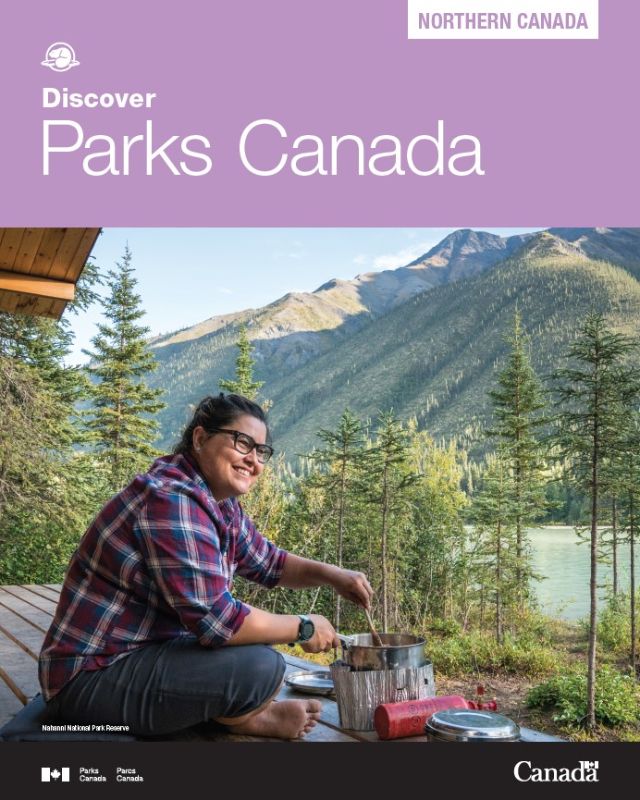
Printed version
Download the Regional Vacation Planner for Northern Canada (PDF, 3 MB) or order your free copy by calling 1-888-773-8888.
Explore
- Date modified :